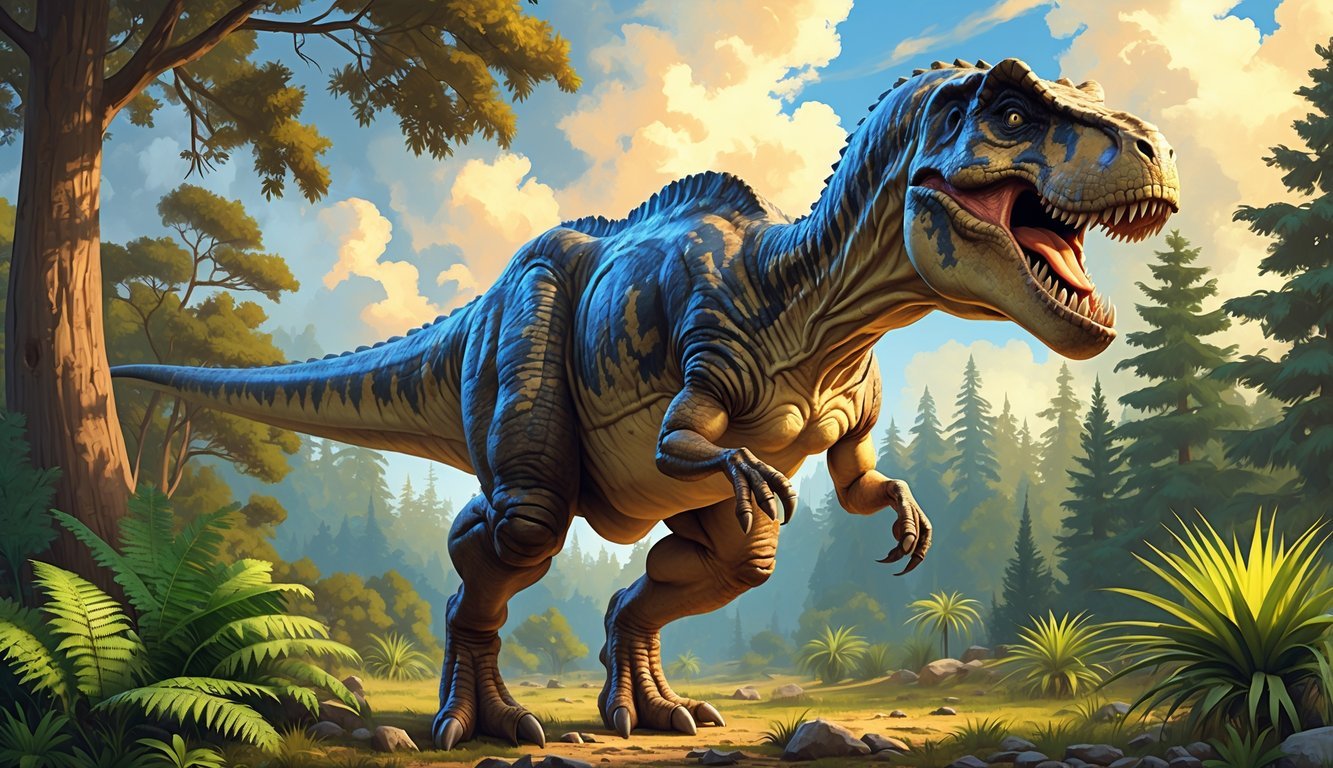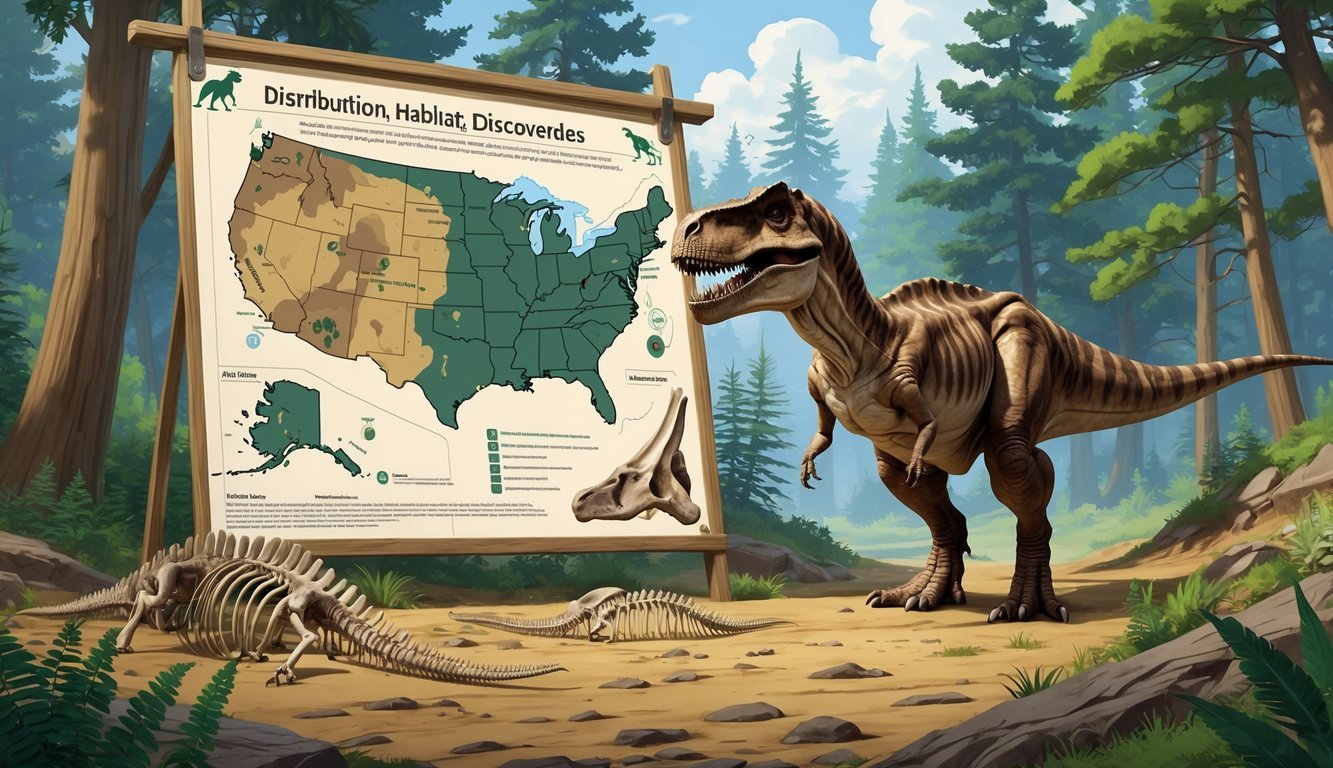PsychNewsDaily Publishers
100 Summit Drive
Burlington, MA, 01803
Telephone: (320) 349-2484
PsychNewsDaily Publishers
100 Summit Drive
Burlington, MA, 01803
Telephone: (320) 349-2484
Tyrannosaurus rex typically lived around 28 to 30 years, with growth rings in fossils revealing insights into their age and health during the late Cretaceous period.

Tyrannosaurus rex, probably the most famous dinosaur out there, actually lived a much shorter life than most people would guess. Most T. rex individuals made it to about 30 years old, with a few reaching their late twenties. That sounds pretty brief for such a massive predator, right? Still, these numbers help us get a better sense of how they grew up and survived during the late Cretaceous period.
Why did their lifespan end up so limited, even though they were huge and powerful? Scientists have dug into fossilized bones and counted growth rings to figure out their age. Turns out, most T. rex didn’t make it past 30. By looking at their lifespan, we get a window into their behavior and how they managed to dominate their world for just a few decades.
If you’re curious about how T. rex lived, where it roamed, or what fossils reveal about its life, there’s plenty more to explore. Digging into the lifespan of T. rex really does open up a new view of one of history’s most impressive predators.

On average, Tyrannosaurus rex lived for about 30 years. Researchers examine fossils to figure out their lifespan, growth, and when they reached adulthood.
You’ll see how experts use different clues from bones to estimate age and growth patterns.
Scientists look at fossils from T. rex of all ages to piece together their life story. These fossils create a growth series, showing changes as the dinosaur aged.
Most studies put T. rex lifespan around 28 to 30 years. That estimate comes from comparing bones from young and older dinosaurs.
Finding more fossils helps researchers get a clearer picture, but let’s be honest, fossils are rare. That makes it tough to be exact about their ages.
Scientists check growth rings in T. rex bones, kind of like counting tree rings, to see how long they lived.
They slice into fossil bones and count the rings, which tracks growth year by year. This approach also shows how quickly T. rex gained body mass.
Growth rings sometimes reveal injuries or illnesses, adding more detail to the dinosaur’s story. Even when the fossil record isn’t perfect, growth rings give direct hints about age and health.
This method really helps paleontologists build better ideas about T. rex lifespan.
T. rex went through crazy-fast growth spurts at certain ages. These usually happened before the dinosaur reached its full size.
Scientists have found that T. rex had a big growth burst between ages 14 and 18. By then, it was nearly adult-sized and probably hit sexual maturity.
Before those years, juvenile dinosaurs grew much slower and were way smaller. Knowing about these growth spurts helps us understand how T. rex changed from a small youngster to a giant predator.

Tyrannosaurus rex mostly lived in what’s now western North America. Fossils show where it thrived, and some discoveries even hint at its population size and relatives.
Let’s look at where T. rex lived, which fossils are famous, and how it stands apart from similar species.
Most T. rex fossils turn up in western North America, especially in the Hell Creek Formation—think Montana, Wyoming, and the Dakotas. Back then, this region was part of a landmass called Laramidia during the late Cretaceous, about 66 to 68 million years ago.
T. rex didn’t live in big herds. Fossil evidence suggests scattered groups, which makes sense for a huge predator that needed tons of meat. Its fossils show it could handle different environments, like forests and river valleys.
You’ve probably heard of “Sue,” the T. rex at Chicago’s Field Museum. Sue’s skeleton is one of the most complete and best-preserved, and it’s taught scientists a lot about T. rex’s size and build.
The Hell Creek Formation has given us many T. rex fossils. Every new find helps scientists learn more about how these dinosaurs grew, stayed healthy, and even how they died.
Ever wondered about Nanotyrannus? Some think it’s a separate species, but others say those fossils really belong to young T. rex.
The debate comes down to differences in skull shape and tooth count. Adult T. rex have heavier, bulkier skulls and fewer, bigger teeth. Nanotyrannus fossils are smaller and have more teeth, but those features match up with young T. rex.
Most experts now agree Nanotyrannus probably wasn’t its own dinosaur, just a teenage T. rex on its way to growing up.

Tyrannosaurus rex usually lived about 28 to 30 years. Their bones give us clues about how long they lasted and when they became adults.
You can actually learn a lot about their lives and habits by studying their age and growth.
T-Rex dinosaurs typically made it to 28 or 30 years old. Getting through the first five years was the hardest part.
Researchers count the rings in T-Rex bones, just like with trees, to work out their age. Some T-Rexes lived almost 30 years, according to those rings.
A T-Rex’s lifespan shows they grew fast but didn’t become adults until about 18. That means they had plenty of time to hunt and reproduce.
Some dinosaurs, like the huge sauropods, probably lived longer than T-Rex. They might have made it to 70 years or more, thanks to their size and slow growth.
The oldest T-Rex reached about 30 years, which is shorter than some dinosaurs that lived 60 years or more. But for giant meat-eaters, 30 years is actually pretty long.
A bunch of things probably shaped how long a T-Rex lived. Food availability played a huge role.
Injuries and diseases could end things early for them. Fights with other dinosaurs or just plain accidents made life risky.
Honestly, making it past those dangerous early years was crucial if a T-Rex wanted to reach its full lifespan.